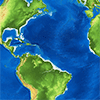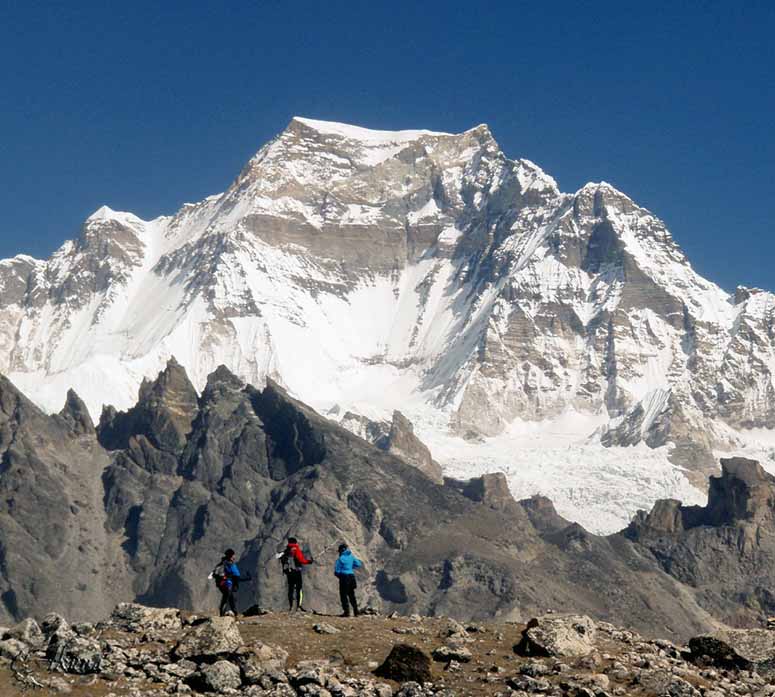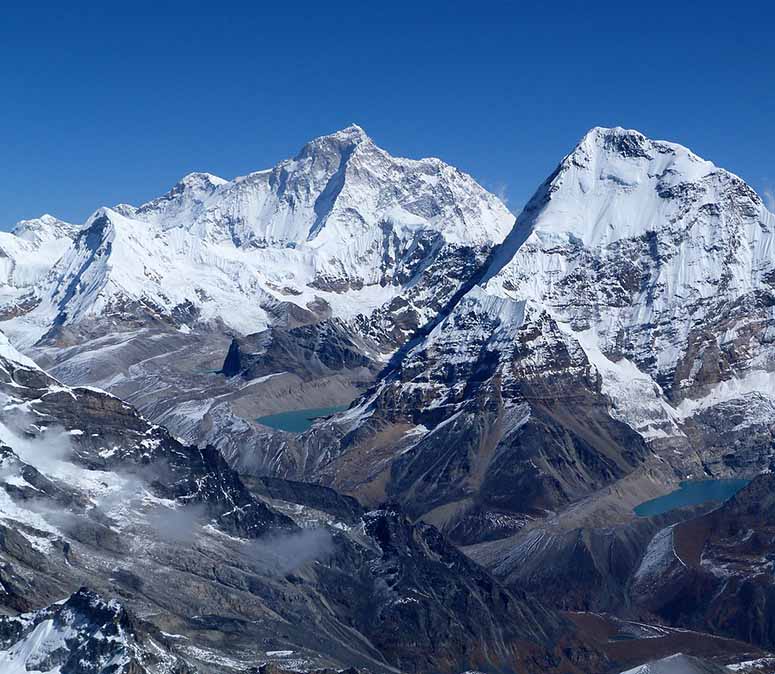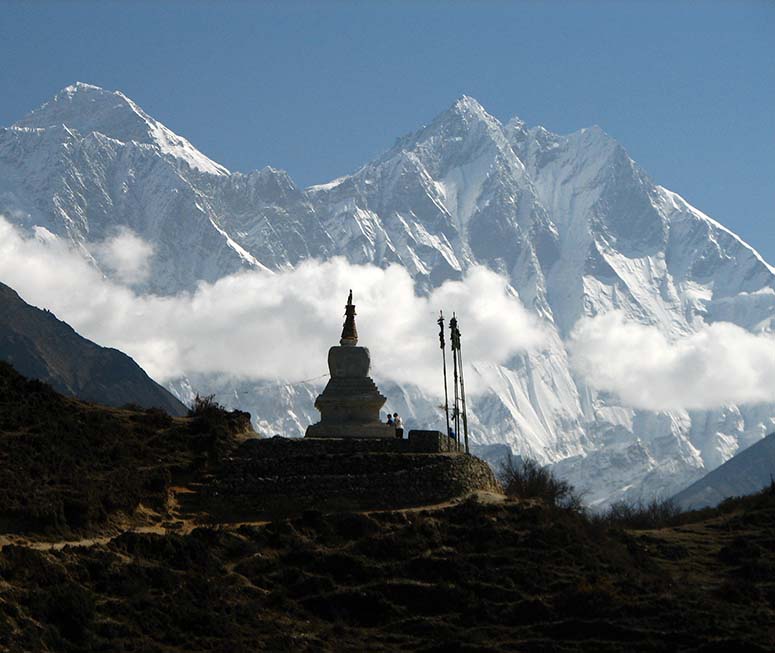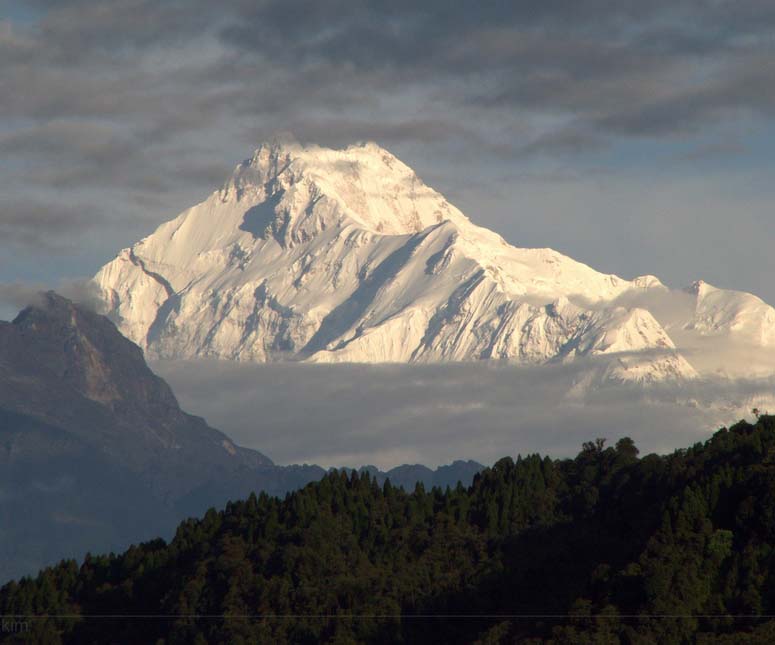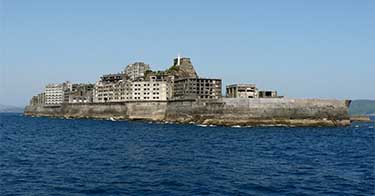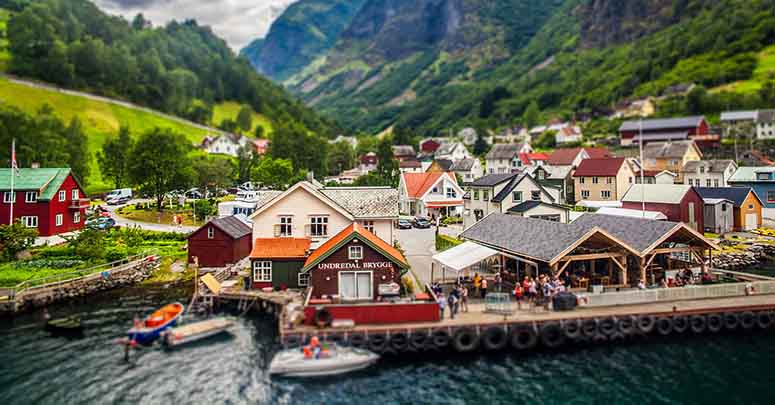Earth
Highest Mountains In The World - Top 6
Updated March 9, 2019
We have compiled a list of the six highest mountains in the world, with facts about their height, location and climbing history.
Most of us know that Mount Everest is the highest mountain in the world. Some of us know about Savage Mountain, or K2, being the runner-up. But what about the third highest peak? Fourth? There are actually 14 mountains on Earth higher than 8,000 m (26,247 ft), all located in the two Asian mountain ranges the Himalayas and the Karakoram, and they are all worth attention. However, to make our list less heavy, we have chosen to immerse ourselves in the six highest mountains.
Before we start, it may be interesting to know that the 4,205 m (13,796 ft) high volcano Mauna Kea a in Hawaii is the tallest mountain in the world, that is, the highest mountain in the world from base to summit.[1] Most of Mauna Kea lies under the ocean, and measured from its submarine base to its peak, the mountain has a combined height of 10,205 m (33,480 ft).[1]
The point on Earth's surface that is farthest from Earth's center is the peak of the 6,263.47 m (20,549 ft) high vulcano Chimborazo in Equador.[9] Chimborazo lies near the equator, and since Earth is wider around the eqautor (due to the centrifugal force exerted by Earth's rotation), Chimborazos peak is more than 2 km (7,000 ft) farther from Earth's centre than the summit of Mt Everest.[10]
Most of us know that Mount Everest is the highest mountain in the world. Some of us know about Savage Mountain, or K2, being the runner-up. But what about the third highest peak? Fourth? There are actually 14 mountains on Earth higher than 8,000 m (26,247 ft), all located in the two Asian mountain ranges the Himalayas and the Karakoram, and they are all worth attention. However, to make our list less heavy, we have chosen to immerse ourselves in the six highest mountains.
Before we start, it may be interesting to know that the 4,205 m (13,796 ft) high volcano Mauna Kea a in Hawaii is the tallest mountain in the world, that is, the highest mountain in the world from base to summit.[1] Most of Mauna Kea lies under the ocean, and measured from its submarine base to its peak, the mountain has a combined height of 10,205 m (33,480 ft).[1]
The point on Earth's surface that is farthest from Earth's center is the peak of the 6,263.47 m (20,549 ft) high vulcano Chimborazo in Equador.[9] Chimborazo lies near the equator, and since Earth is wider around the eqautor (due to the centrifugal force exerted by Earth's rotation), Chimborazos peak is more than 2 km (7,000 ft) farther from Earth's centre than the summit of Mt Everest.[10]
Advertisement:
6. Cho Oyu, China (Tibet)/Nepal - 8,188 m (26,863 ft)
Cho Oyu is located only 20 km (12 mi) west of Mount Everest.
Like most of the mountains higher than 8,000 m (26,247 ft), the summit of Cho Oyu is divided by an international border. In this case it is the border between Tibet (which is governed by China) and Nepal. The Tibet-Nepal border runs through several 8,000 m (26,247 ft) summits in the Himalayas.
Cho Oyu is almost as busy with climbers as its neighbor Everest. This is mainly due to the mountain's closeness to a large trade route and its relatively gentle slopes - Cho Oyu is commonly known as the easiest eight-thousander to climb. The summit of Cho Oyu, 8,188 m (26,863 ft) above sea level,[2] was first climbed in 1954 by Austrians Herbert Tichy and Joseph Jöchler, and sherpa Pasang Dawa Lama.
As of 2012, 3,138 people had summited Cho Oyu and 44 of all who had attempted had died (44 of 3,138 equals a "death ratio" of 1.4 %).[8]
Cho Oyu is almost as busy with climbers as its neighbor Everest. This is mainly due to the mountain's closeness to a large trade route and its relatively gentle slopes - Cho Oyu is commonly known as the easiest eight-thousander to climb. The summit of Cho Oyu, 8,188 m (26,863 ft) above sea level,[2] was first climbed in 1954 by Austrians Herbert Tichy and Joseph Jöchler, and sherpa Pasang Dawa Lama.
As of 2012, 3,138 people had summited Cho Oyu and 44 of all who had attempted had died (44 of 3,138 equals a "death ratio" of 1.4 %).[8]
5. Makalu, China (Tibet)/Nepal - 8,485 m (27,837 ft)
Makalu is located only 18 km (11 mi) southeast of Mount Everest, and is just like Cho Oyu easy to spot from the summit of Everest. Makalu is also located on the border between Nepal and Tibet. The photo shows Makalu in the background and Chamlang in the foreground.
Makalu is considered one of the toughest mountains to climb, due to its steep slopes and sharp, exposed ridges. The summit, reaching 8,485 m (27,837 ft) above sea level,[3] is shaped like a pyramide and requires technical climbing. Makalu was first climbed in 1955 by French climbers Lionel Terray and Jean Couzy.
As of 2012, 361 people had summited Makalu and 31 of all who had attempted had died (a death ratio of 8.6 %).[8]
Makalu is considered one of the toughest mountains to climb, due to its steep slopes and sharp, exposed ridges. The summit, reaching 8,485 m (27,837 ft) above sea level,[3] is shaped like a pyramide and requires technical climbing. Makalu was first climbed in 1955 by French climbers Lionel Terray and Jean Couzy.
As of 2012, 361 people had summited Makalu and 31 of all who had attempted had died (a death ratio of 8.6 %).[8]
Advertisement:
4. Lhotse, China (Tibet)/Nepal - 8,516 m (27,939 ft)
Lhotse also has its summit divided by the Tibet-Nepal border, and the mountain is even closer to Everest than Cho Oyu and Makalu.
The photo shows Mount Everest to the left and Lhotse to the right.
Lhotse rises 8,516 m (27,939 ft) above sea level and is the fourth highest mountain in the world.[4]
Lhotse is more or less attached to Mount Everest. The two mountains are only separated by a mountain pass at around 7,900 m (26,000 ft) called South Col. Seen from South Col, which is passed when climbing Mount Everest via one of the main routes, the peak of Lhotse looks quite reachable. The summit is only around 600 m (2,000 ft) above this site. However, on the other side of the mountain is Lhotse's steep south face (photo), which is one of the most impressive mountain faces in the Himalayas. Lhotse was first climbed in 1956 by Swiss climbers Ernst Reiss and Fritz Luchsinger.
As of 2012, 461 people had summited Lhotse and 13 of all who had tried had died (a death ratio of 2.8 %).[8]
Lhotse is more or less attached to Mount Everest. The two mountains are only separated by a mountain pass at around 7,900 m (26,000 ft) called South Col. Seen from South Col, which is passed when climbing Mount Everest via one of the main routes, the peak of Lhotse looks quite reachable. The summit is only around 600 m (2,000 ft) above this site. However, on the other side of the mountain is Lhotse's steep south face (photo), which is one of the most impressive mountain faces in the Himalayas. Lhotse was first climbed in 1956 by Swiss climbers Ernst Reiss and Fritz Luchsinger.
As of 2012, 461 people had summited Lhotse and 13 of all who had tried had died (a death ratio of 2.8 %).[8]
3. Kangchenjunga, Nepal/India - 8,586 m (28,169 ft)
The 8,586 m (28,169 ft) high mountain Kangchenjunga (also spelled Kanchenjunga) is also located in the Himalayas, but around 125 km (78 mi) east of Mount Everest. This whole part of the Himalayas is called Kangchenjunga, and the name roughly means "the five treasures of snow" after the five highest peaks in the area. Kangchenjunga's peak lies directly on the border between Nepal and India.
Kanchenjunga is one of the most dangerous mountains in the Himalayas - many climbers have fallen victim to avalanches, rock falls, crevasses and blizzards. Its summit was first ascended in 1955 by British climbers Joe Brown and George Band.
As of 2012, 283 people had summited Kangchenjunga and 40 of all who had attempted had died (a death ratio of 14 %).[8]
Kanchenjunga is one of the most dangerous mountains in the Himalayas - many climbers have fallen victim to avalanches, rock falls, crevasses and blizzards. Its summit was first ascended in 1955 by British climbers Joe Brown and George Band.
As of 2012, 283 people had summited Kangchenjunga and 40 of all who had attempted had died (a death ratio of 14 %).[8]
2. K2 (Mount Godwin-Austen), China/Pakistan - 8,611 m (28,251 ft)
K2, also known as Mount Godwin-Austen or the Savage Mountain, lies on the border between China and Pakistan and is not located in the Himalayas like the other mountains on this list. K2 lies in the Karakoram which runs parallel to western Himalaya, although sometimes however, the Karakoram is considered to be part of the Himalayas.
K2 stands for Karakoram 2, the name originating from K2 being the second tall peak labeled during the Brittish mapping of the Karakoram range in the 19th century.
The Karakoram is full of peaks higher than 7,000 m (23,000 ft) and the central part of the mountain range has the highest concentration of 8,000 m (26,247 ft) peaks on Earth.
K2 (8,611 m or 28,251 ft)[6] rises high above its surroundings and its sides are steep like a pyramid's. Because of this, and its erratic weather and frequent avalanches, many consider K2 to be the hardest mountain in the world to climb. K2 was first climbed in 1954 by Italians Lino Lacedelli and Achille Compagnoni, but there have been no successful winter ascents.
As of 2012, only 306 people had summited K2 and 81 of all who had attempted had died (a death ratio of 26 %).[8] K2 has the second highest death ratio of all the mountains higher than 8,000 m (26,247 ft) (Annapurna, the tenth highest mountain in the world, is the deadliest with 32 % as of 2012).[8]
K2 (8,611 m or 28,251 ft)[6] rises high above its surroundings and its sides are steep like a pyramid's. Because of this, and its erratic weather and frequent avalanches, many consider K2 to be the hardest mountain in the world to climb. K2 was first climbed in 1954 by Italians Lino Lacedelli and Achille Compagnoni, but there have been no successful winter ascents.
As of 2012, only 306 people had summited K2 and 81 of all who had attempted had died (a death ratio of 26 %).[8] K2 has the second highest death ratio of all the mountains higher than 8,000 m (26,247 ft) (Annapurna, the tenth highest mountain in the world, is the deadliest with 32 % as of 2012).[8]
1. Mount Everest, China (Tibet)/Nepal - 8,848 m (29,028 ft)
The 8,848 m (29,028 ft)[7] high Mount Everest lies on the border between Nepal and Tibet and is by a fairly large margin the highest mountain in the world. The photo shows Everest's mighty north face, seen from the vicinity of the north base camp.
Everest's two main climbing routes are not super steep - the most dangerous things on Everest are the weather and the altitude. Few people have died by falling off the mountain compared to the number of people killed by the cold and the altitude. When ascending Mount Everest climbers must spend a long time in the "death zone", which is the altitude where the oxygen concentration of the air is too low for the body to recover. Mount Everest is very busy nowadays and there are plenty of ladders, fixed ropes and guides to help climbers get to the summit. But it is still a dangerous mountain, something the world was reminded of in 1996 when eight climbers died during a blizzard. In 2014, 16 climbers died in a single avalanche, and even more died in avalanches triggered by the 2015 Nepal eartquake. Mount Everest was first climbed in 1953 by Nepalese climber Tenzing Norgay and New Zealand climber Edmund Hillary.
As of 2012, 5,656 people had summited Mount Everest and 223 of all who had tried had died (a death ratio of 4 %).[8]
Everest's two main climbing routes are not super steep - the most dangerous things on Everest are the weather and the altitude. Few people have died by falling off the mountain compared to the number of people killed by the cold and the altitude. When ascending Mount Everest climbers must spend a long time in the "death zone", which is the altitude where the oxygen concentration of the air is too low for the body to recover. Mount Everest is very busy nowadays and there are plenty of ladders, fixed ropes and guides to help climbers get to the summit. But it is still a dangerous mountain, something the world was reminded of in 1996 when eight climbers died during a blizzard. In 2014, 16 climbers died in a single avalanche, and even more died in avalanches triggered by the 2015 Nepal eartquake. Mount Everest was first climbed in 1953 by Nepalese climber Tenzing Norgay and New Zealand climber Edmund Hillary.
As of 2012, 5,656 people had summited Mount Everest and 223 of all who had tried had died (a death ratio of 4 %).[8]
References
[1]
"Tallest mountain". Guinness World Records. Retrieved March 9, 2019.
[2]
"First ascent of Cho Oyu". Guinness World Records. Retrieved March 9, 2019.
[3]
"First ascent of Makalu". Guinness World Records. Retrieved March 9, 2019.
[4]
"First ascent of Lhotse". Guinness World Records. Retrieved March 9, 2019.
[5]
"First ascent of Kangchenjunga". Guinness World Records. Retrieved March 9, 2019.
[6]
"First ascent of K2". Guinness World Records. Retrieved March 9, 2019.
[7]
"Highest mountain". Guinness World Records. Retrieved March 9, 2019.
[8]
"Stairway to heaven". The Economist. Published May 29, 2013. Retrieved March 9, 2019.
[9]
"Chimborazo, el volc?n de Ecuador m?s alto que el Everest (si se mide desde el centro de la Tierra)" (in spanish). BBC. Published April 7, 2016. Retrieved March 9, 2019.
[10]
"Farthest mountain peak from Earth's centre". Guinness World Records. Retrieved March 9, 2019.
Related
Latest





